Encouraged by a very promising weather forecast, I made a last minute decision to leave the comfort of my bed early on Sunday morning, and head down to Goodwood to one of the now famous first-Sunday-in-the-month “Breakfast meets. Each of these events has a “theme”, though this seems to be both creatively interpreted, and only seen as guidance rather prescription by those who bring their cars along for show. The theme for this event was billed as “Fabulous Family Favourites”, which could have meant a wallow in nostalgia, and rows of once best selling models that are now rarely seen on the roads. The reality proved rather different with such a wide variety of cars on display that it would have been hard to determine the theme based solely on the cars present. As always with these events, people start arriving at 8am (or perhaps earlier – it was about 8:25 am when I arrived), and some only stay an hour or so, By mid-day, more or less everyone has departed. So as you wander around the display areas, you never know when you return to the same place whether there will be more cars to see next time around, or a lot of spaces where the owners have already left. The weather was indeed fantastic, but bright sun, and early morning do make for some challenging shadows, so some of the cars I wanted to photograph had indeed escaped by the time the conditions were better. Nonetheless, I returned home with nearly 150 pictures, ranging from some very rare cars indeed, to some more commonly seen classics, and with a good selection of exotic cars as well.
BMC
I was expecting to see lots of cars from the BMC Group (Austin, Morris, MG, Riley and Wolseley), as this was a dominant player on the British market until the late 1960s. And indeed, there was plenty of variety.
A couple of A35s were on show.
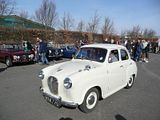
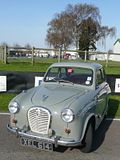 This rather nice A40 Somerset was Austin’s family car offering from 1952 to 1954. A roomy car, but with only a 1200cc engine, performance was not much of a feature!
This rather nice A40 Somerset was Austin’s family car offering from 1952 to 1954. A roomy car, but with only a 1200cc engine, performance was not much of a feature!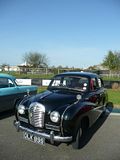
 Morris’ competitor to this car was the Minor, a car sold in far greater numbers (it was on sale for a lot longer, of course).
Morris’ competitor to this car was the Minor, a car sold in far greater numbers (it was on sale for a lot longer, of course).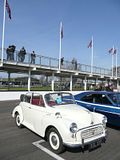
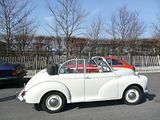 There were a couple of early Minis to see. With the 50th anniversary celebrations for Issigonis’ baby due to start later this year, I am sure every Mini in the land will feature at some event or other during 2009!
There were a couple of early Minis to see. With the 50th anniversary celebrations for Issigonis’ baby due to start later this year, I am sure every Mini in the land will feature at some event or other during 2009!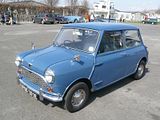 The Cambridge/Oxford Owners Club had a strong presence, and whether by luck or judgment I am not sure, had a representative of each of the 5 badge-engineered “Farina” cars from the late 1950s/early 1960s: Austin Cambridge, Morris Oxford, MG Magnette, Riley 4/72 and Wolseley 16/60.
The Cambridge/Oxford Owners Club had a strong presence, and whether by luck or judgment I am not sure, had a representative of each of the 5 badge-engineered “Farina” cars from the late 1950s/early 1960s: Austin Cambridge, Morris Oxford, MG Magnette, Riley 4/72 and Wolseley 16/60.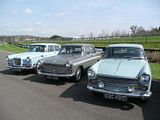 This RM Riley dates from the early 1950s from a time when Riley had their own unique models, not shared with anyone else (this was the Nuffield era before the BMC creation). The 3 Series BMW of its day, in a way, as these were marketed as sports sedans.
This RM Riley dates from the early 1950s from a time when Riley had their own unique models, not shared with anyone else (this was the Nuffield era before the BMC creation). The 3 Series BMW of its day, in a way, as these were marketed as sports sedans.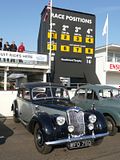 There were a couple of Austin Healey 3000s, as you might expect. Always popular, these cars are now expensive to buy, but oh so desirable just to look at, and listen to!
There were a couple of Austin Healey 3000s, as you might expect. Always popular, these cars are now expensive to buy, but oh so desirable just to look at, and listen to!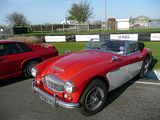 A few MGs. too, mostly of the MGB variety.
A few MGs. too, mostly of the MGB variety.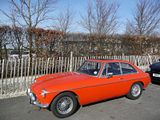 FORD
FORDLots of Fords, as you would expect.
An immaculate Anglia. These cars sold in large volume to the reps of the day. I could not imagine spending hours and hours driving on the new motorways of Britain in one of these with back-breaking seats that only supported the lower half of your back, few creature comforts and the incessant din of the engine which would be going flat out on the level at little more than 70 mph. But people did.
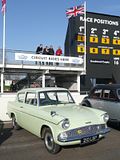
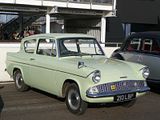 Even earlier than that was this Prefect, in very unusual Station Wagon guise.
Even earlier than that was this Prefect, in very unusual Station Wagon guise. A couple of Cortinas – a Mark 1 and a Mark 2 and a Mark 4
A couple of Cortinas – a Mark 1 and a Mark 2 and a Mark 4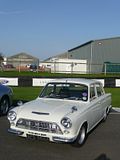
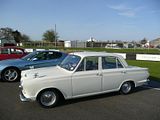
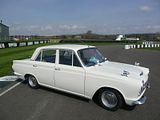

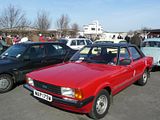 There was a Lotus Cortina Mark 1, too.
There was a Lotus Cortina Mark 1, too.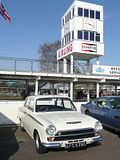 A first generation Zephyr. This was Ford’s first all new post War design, and it was an instant hit, running from 1950 until replacement in 1956.
A first generation Zephyr. This was Ford’s first all new post War design, and it was an instant hit, running from 1950 until replacement in 1956.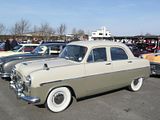
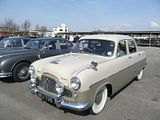
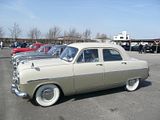 The second generation Consul and Zephyr cars were notably larger, and more Americanate in their styling. This is a Consul, the entry level model in the range.
The second generation Consul and Zephyr cars were notably larger, and more Americanate in their styling. This is a Consul, the entry level model in the range.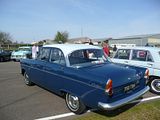 The third generation models arrived in 1962 and were larger again. Whenever I see these, I cannot help feel that the wheels look lost in the wheel arches and the track is several inches too narrow. This one sported another period piece – a tail of the Esso tiger, the “tiger having been put in the tank”, which was located behind the rear number plate, quite clearly.
The third generation models arrived in 1962 and were larger again. Whenever I see these, I cannot help feel that the wheels look lost in the wheel arches and the track is several inches too narrow. This one sported another period piece – a tail of the Esso tiger, the “tiger having been put in the tank”, which was located behind the rear number plate, quite clearly.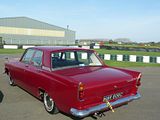 A very rare Zephyr IV Estate. These cars were not part of the standard Ford product range, but were converted to estate car spec in Farnham. With a J plate on it, this would be one of the last models, before the “Z” cars were replaced by the Consul/Granada range.
A very rare Zephyr IV Estate. These cars were not part of the standard Ford product range, but were converted to estate car spec in Farnham. With a J plate on it, this would be one of the last models, before the “Z” cars were replaced by the Consul/Granada range.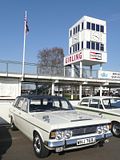
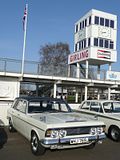
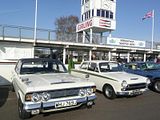
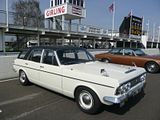
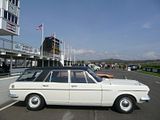 This is one of the first of the sporting Escorts, the Twin Cam model from 1968.
This is one of the first of the sporting Escorts, the Twin Cam model from 1968.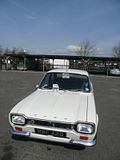
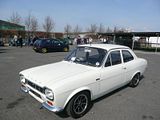 This early Fiesta XR2 was immaculate. These cars are rare now, as they were only produced for under 2 years before the facelifted model came out. There were a couple of those on show, too, but they eluded the camera.
This early Fiesta XR2 was immaculate. These cars are rare now, as they were only produced for under 2 years before the facelifted model came out. There were a couple of those on show, too, but they eluded the camera.
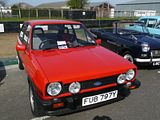
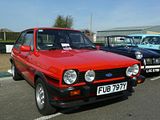
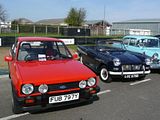 There were a few Capris on show, nearly all of which were the Series 3 cars. Considering this is the 40th anniversary of the first Capri, we can expect to see these cars being celebrated at a number of events during the year.
There were a few Capris on show, nearly all of which were the Series 3 cars. Considering this is the 40th anniversary of the first Capri, we can expect to see these cars being celebrated at a number of events during the year.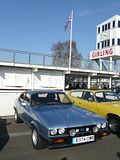 From the other side of the Pond, there were several Mustangs. Probably 8 or so, though few of them met my camera. I still reckon the 64 Mustang Convertible is one of the nicest cars ever to come out of America.
From the other side of the Pond, there were several Mustangs. Probably 8 or so, though few of them met my camera. I still reckon the 64 Mustang Convertible is one of the nicest cars ever to come out of America.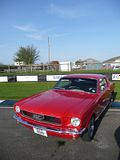 VAUXHALL
VAUXHALLAlthough these were widely regarded as not very good even when they were new, I just loved this F-Series Victor Super. Aping American styling of the day, these mid-sized cars were appallingly badly made, with paper thin steel which rusted badly from day one, and where the rust did not take hold, the paint work generally parted company with the metal. There are very few survivors, but this one was here and was attracting lots of attention.
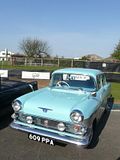
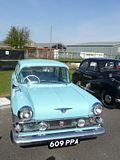

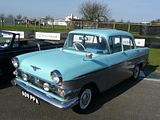
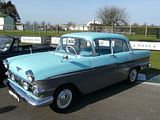
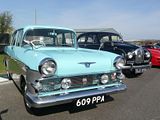 The Victor had a bigger brother, the Velox and Cresta models, and the PA models from this range were also styled very much in the American idiom, with the dog-leg windscreen, and gawdy duo-tone paint finishes. A wonderful period piece, though thank goodness I never had to drive one!
The Victor had a bigger brother, the Velox and Cresta models, and the PA models from this range were also styled very much in the American idiom, with the dog-leg windscreen, and gawdy duo-tone paint finishes. A wonderful period piece, though thank goodness I never had to drive one!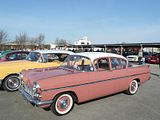 The successor to this car, the PB Cresta was launched in 1962, and these cars are now rarer than their predecessors.
The successor to this car, the PB Cresta was launched in 1962, and these cars are now rarer than their predecessors.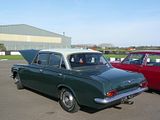
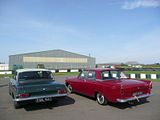
 In 1963, Vauxhall came out with their first “small” car for many years, the Viva. This particular car has been in the same family since 1966 and is used as a “daily” driver, though it has done far fewer miles in 43 years than I cover in about 3!
In 1963, Vauxhall came out with their first “small” car for many years, the Viva. This particular car has been in the same family since 1966 and is used as a “daily” driver, though it has done far fewer miles in 43 years than I cover in about 3!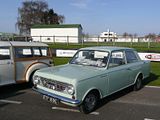 ROOTES GROUP/CHRYSLER
ROOTES GROUP/CHRYSLERSurprisingly few of these cars. I did spot a Hillman Estate – one of the very early cars before they were badged Hunter, which reminded me very much of “my” first car, which was the family’s late 1975 model. Sadly, this one had been lowered and it looked so odd that I could not bring myself to photograph it.
I did catch these 2 family cars, a Series 3 Minx and a 1973 Avenger DL, just as they emerged from their hiding places (which were impossible for the photographer because of the shadows), though:
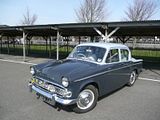
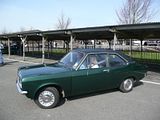 TRIUMPH
TRIUMPHSeveral Stags were on show. With such sunny weather, driving to the event in one of these with the roof down would surely have been immensely enjoyable. I do like the Stag, its reputation notwithstanding!
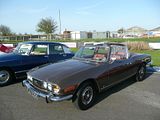 A vast number of people, on seeing the Triumph HeraIds got all nostalgic, and depending on their age either said that they had owned one, or their mother had. This car was loved by the women of Britain, as it was stylish, easy to drive, very manoeuvrable and practical, What a shame that the replacement, the Toledo never hit the mark in the same way.
A vast number of people, on seeing the Triumph HeraIds got all nostalgic, and depending on their age either said that they had owned one, or their mother had. This car was loved by the women of Britain, as it was stylish, easy to drive, very manoeuvrable and practical, What a shame that the replacement, the Toledo never hit the mark in the same way.
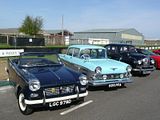 ROVER
ROVERFew classic car gatherings lack more examples of the Rover, from the days when Rover was a respected prestige badge, and this event was no exception, with several examples of the P4 “Auntie” Rover amd the later P5, so beloved of Government Ministers for many years after production ceased.
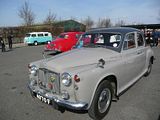
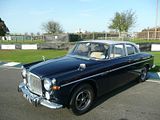
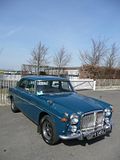 JAGUAR-DAIMLER
JAGUAR-DAIMLERSeveral examples of the very popular Mark 2, and the Daimler 2.5 litre version.
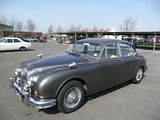
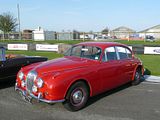
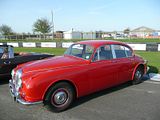 This is an XK150S. As I was taking the photo, someone standing next to me wondered out loud if it was an original UK car. He said that only 72 UK spec 150S cars were made, so it would be incredibly rare if it were. More likely it it has been re-imported and converted. It was very nice regardless of its pedigree!
This is an XK150S. As I was taking the photo, someone standing next to me wondered out loud if it was an original UK car. He said that only 72 UK spec 150S cars were made, so it would be incredibly rare if it were. More likely it it has been re-imported and converted. It was very nice regardless of its pedigree! There were plenty of other XK120/140/150 cars to see, too.
There were plenty of other XK120/140/150 cars to see, too.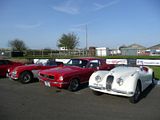
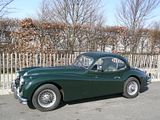
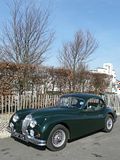 No surprise to find the lovely “E” Type on show.
No surprise to find the lovely “E” Type on show. From the saloon car offerings, there was this Mark VII, dating from about 1957.
From the saloon car offerings, there was this Mark VII, dating from about 1957.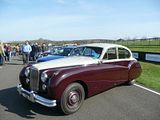
 A Series 2 Daimler Double Six.
A Series 2 Daimler Double Six.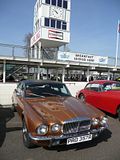 TWR Jaguar XJ-S 6 litre.
TWR Jaguar XJ-S 6 litre.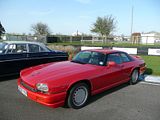 There were 3 of the very latest cars on show, too: a new XK-R and 2 XF-Rs. The drivers who had brought them down included one Chris Harris, who was regaling his fellow Jaguar-fleece wearing “colleagues” of some of the practical jokes that go on between the various journalists and Top Gear presenters. The cars were parked at such an angle that photos would not have worked. Although I think the XF-R is a supremely desirable car, I have to say that at idle it sounds distinctly ordinary. In that respect at least, my S6 has it beaten. I will have to get a drive in one soon, though to see if it really is as good as the press all say. It looks fantastic in bright red! As does the XK-R. Great to see such desirable Jaguars, and to hear everyone say so as they were near the cars.ROLLS-ROYCE/BENTLEY
There were 3 of the very latest cars on show, too: a new XK-R and 2 XF-Rs. The drivers who had brought them down included one Chris Harris, who was regaling his fellow Jaguar-fleece wearing “colleagues” of some of the practical jokes that go on between the various journalists and Top Gear presenters. The cars were parked at such an angle that photos would not have worked. Although I think the XF-R is a supremely desirable car, I have to say that at idle it sounds distinctly ordinary. In that respect at least, my S6 has it beaten. I will have to get a drive in one soon, though to see if it really is as good as the press all say. It looks fantastic in bright red! As does the XK-R. Great to see such desirable Jaguars, and to hear everyone say so as they were near the cars.ROLLS-ROYCE/BENTLEY
Lots of comments about this Silver Cloud as it arrived, as bright scarlet is not the most usual hue for this otherwise elegant car.
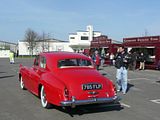 An R Type Convertible. Elegance of a very clear kind here, with a Silver Spur parked up behind it.
An R Type Convertible. Elegance of a very clear kind here, with a Silver Spur parked up behind it.
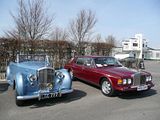 With the Rolls-Royce factory just down the road, it was clearly too good an opportunity to miss not to have a current car on show, so this Coupe was parked up for everyone to admire.
With the Rolls-Royce factory just down the road, it was clearly too good an opportunity to miss not to have a current car on show, so this Coupe was parked up for everyone to admire.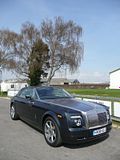 ARMSTONG SIDDELEY
ARMSTONG SIDDELEY
A name that long ago vanished from the Automotive scene, this is a Sapphire from about 1960. A sort of cut-price Rolls-Royce, but definitely a cut above a Rover, and far more exclusive than Jaguar.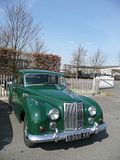
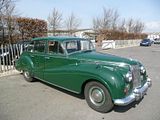 GINETTAA G26
GINETTAA G26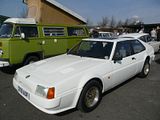 BMW
BMWFor once, an event with very few BMWs on show. There was this E9 model 3.0 CS, though.
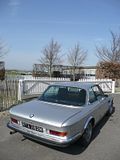 In the late 1950s, BMW had a licence to make the Isetta bubble car, and these are what kept the company alive. so we should all be grateful for these funny devices.
In the late 1950s, BMW had a licence to make the Isetta bubble car, and these are what kept the company alive. so we should all be grateful for these funny devices.
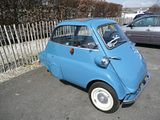 Earlier than that was this 326 model, which came at the very end of the 1930s. Perhaps this could be seen as the 3 series of its day, though it certainly did not sell in the volume of that ubiquitous machine.
Earlier than that was this 326 model, which came at the very end of the 1930s. Perhaps this could be seen as the 3 series of its day, though it certainly did not sell in the volume of that ubiquitous machine.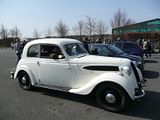
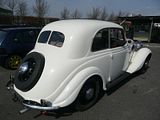 BORGWARD
BORGWARDNo-one seemed to know what this was. In case you need help, too, it is an Isabella Coupe from about 1960. Borgward made a range of saloon, coupe and estate cars that were designed to appeal to the middle classes. they added an innovative 2.3 litre saloon complete with complex air suspension to the range in 1960, but months later were taken over by NSU and the models and the name disappeared.
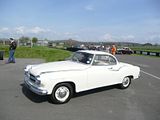 MERCEDES
MERCEDESSeveral examples of the “Pagoda” W113 Mercedes on show, only one of which was snapped by me. One of the loveliest of Mercedes cars ever, these are now climbing steadily in value, and it is not hard to imagine why.
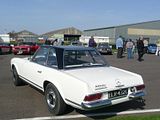 BUICK
BUICKA splendid 1956 Buick Special. Not quite a family favourite in the UK, but for sure these were popular in the US at the time.
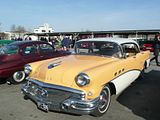

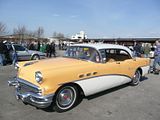 DODGE
DODGEAnother US “family” car, was this 1970 Dodge Monaco Wagon. Massive in comparison with the biggest European cars of its day.
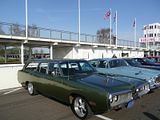 AMC
AMCThis Javelin, dating from 1970, was the AMC Group’s offering in the Muscle car class, and suffered from all the usual traits of this class of car: lots of power with a chassis and brakes that could not cope with it all.
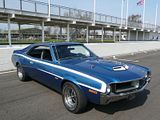

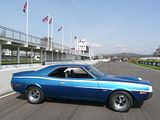 DATSUN
DATSUNThis car, the Sunny 120Y was the start of the real penetration of the Japanese into the UK car market. Although dynamically nothing special, and prone to rust (like all cars of their era), the build quality, reliability and equipment levels of these cars was way in advance of what Ford, Vauxhall and BL were offering, and many people bought them. My parents’ neighbours had a couple, and almost apologised for their apparent act of “treachery” at the time, but they were fed up with the shoddy quality of British cars at the time. Because they rusted badly, there are few of them left now, so this Coupe model was a real period piece.
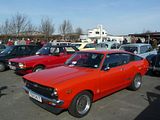
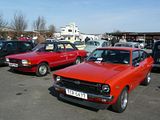
OPEL
A first generation Manta, in luxurious Berlinetta spec. This was Opel’s response to the Capri, and never had quite the same following, not least because in the UK the cars were more costly and seen as an import whereas the Capri was seen as a domestic product.
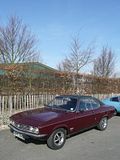
 CITROEN
CITROENThere were a couple of examples of the ever popular DS on show. Watching them start up, and seeing the suspension rise, first at the back, then the front reminded of trips to school in an elderly ID19 Safari which did the same thing, until the day when the whole system failed and it had to be driven home slowly almost scraping its belly on the ground. A wonderful car, appreciated by just about everyone, and deservedly so, too.

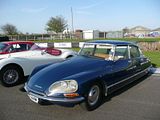 PEUGEOT
PEUGEOTAlthough very popular in their native France, import duties made these cars very costly when they were new, and so they were always rare in the UK. The 404, designed by Farina, and surprisingly similar in outline to the BMC cars was generally held to be a much better car than the Cambridge/Oxford models and its longevity especially in African shows how strong and durable the cars were.
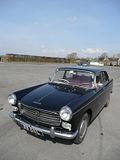
 A 205 CJ, the cheaper model of the popular 205 Cabrio range.
A 205 CJ, the cheaper model of the popular 205 Cabrio range.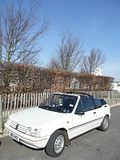
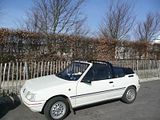 RENAULT
RENAULTThis rather tatty late model R4 turned up late in the morning. The survival rate of these cars is tiny. Over 8 million were made, but when did you last see one? Even in France they have largely vanished.
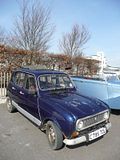 SAAB
SAABA late model 96. These quirky cars, powered by a Ford-sourced V4 engine were quite popular in their day, but even despite their strength have mainly vanished from our roads and are now a rare spot.
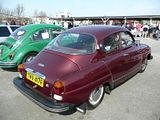 VOLVO
VOLVODefinitely an aspirational car in the 1960s and 1970s. My father – no lover of cars – always said that if he could afford it (he couldn’t, he had 2 kids and our school fees to pay!), he would have had a 145 Estate and not the Hillman Hunters he bought! This is a 164, the top model in the range, powered by a 3 litre V6 engine and distinguished from the lesser 140 series cars by the twin front headlights and different grille.
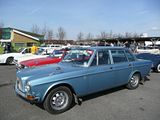 FIAT
FIATThe only Fiat on show was this fantastic Multipla. Based on the 600, this could be seen as an early example of a people carrier, with seating for 6 people in a very compact body indeed.
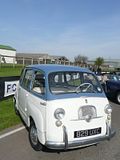
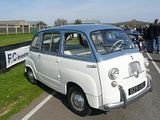 LANCIA
LANCIAThis lovely Flaminia Coupe Touring Superleggera was rated by many to be one of the prettiest cars of the event, and who can disagree. The owner has it a long time, and clearly loves it, and was only too pleased to show it off. He did show how the boot is so shallow to be all but useless, and when he opened the bonnet, you can see that the engine is so well back behind the wheels that the car has balanced weight distribution and he said it handles well. This car dates from the time when Lancia was renowned for exquisite (and costly) engineering.
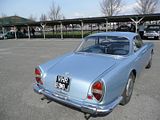 ALFA ROMEO
ALFA ROMEOOne of the few remaining Guilietta Berlinas that has not been converted into a race car
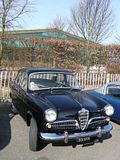 And the same comment about this lovely Guilia Super Berlina
And the same comment about this lovely Guilia Super Berlina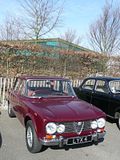
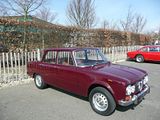
 Even rarer are the 105 model Berlina cars, the 1750/2000 models. This one is a regular at Italian car events, and is unusual as it is not in Alfa Red.
Even rarer are the 105 model Berlina cars, the 1750/2000 models. This one is a regular at Italian car events, and is unusual as it is not in Alfa Red.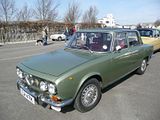 And so, on to the real exotics.
And so, on to the real exotics.There were a few exotic cars scattered in among the main exhibits.
BRISTOL
A very rare 405 Convertible
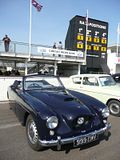
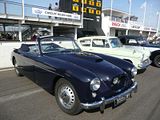
 The earlier 401 model, of which quite a few survive.
The earlier 401 model, of which quite a few survive.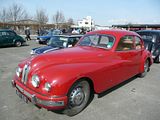 There was a 412, but the owner drove off just as I was composing the photo!MASERATI
There was a 412, but the owner drove off just as I was composing the photo!MASERATI
Perhaps not from the time of the finest Maserati products, this rather nicely kept 222 was attracting the admiring glances.
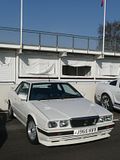 LAMBORGHINI
LAMBORGHINI
An Espada. It never ceases to amaze me how many of these cars appear at such events, as I had assumed that very few of them ever found their way to the UK.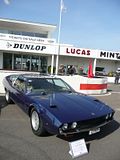 FERRARI
FERRARIThere was a 456 GT, one of the more elegant recent models, in among the classic.
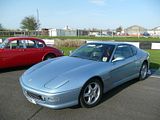 Early on, I found a row of 1960s Ferraris parked up, and what sight they made, with various 250 and 330 models to enjoy. I was amused to see 2 very large adults clamber into the back of the 330 GT, before the front passenger and driver got in and they drove off. They did not even look that uncomfortable.
Early on, I found a row of 1960s Ferraris parked up, and what sight they made, with various 250 and 330 models to enjoy. I was amused to see 2 very large adults clamber into the back of the 330 GT, before the front passenger and driver got in and they drove off. They did not even look that uncomfortable.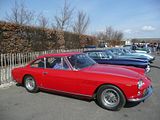
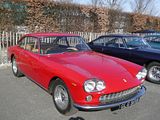
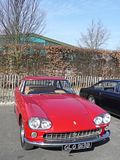
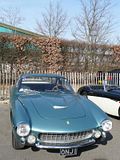
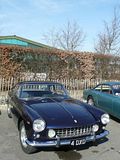
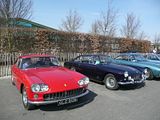
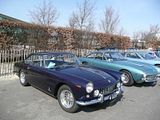
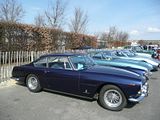
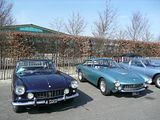
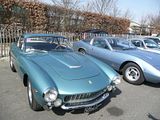
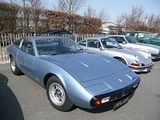
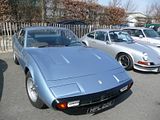 Later in the morning, several more turned up, and it would appear that there was a separate Ferrari event for which the Goodwood Breakfast was just a prelude. So, enjoy the spectacle of 2 275GTBs:
Later in the morning, several more turned up, and it would appear that there was a separate Ferrari event for which the Goodwood Breakfast was just a prelude. So, enjoy the spectacle of 2 275GTBs:

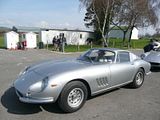 And three Daytonas. If I am being honest, these were probably my favourite cars of the day. I just love the looks of the Daytona. It was always the winner in “Top Trumps” at school, and it’s still a winner now. Just lovely!
And three Daytonas. If I am being honest, these were probably my favourite cars of the day. I just love the looks of the Daytona. It was always the winner in “Top Trumps” at school, and it’s still a winner now. Just lovely!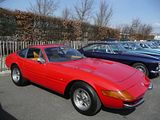
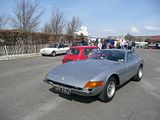
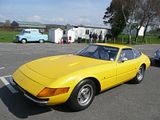
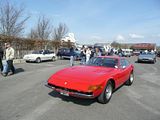
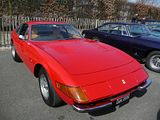
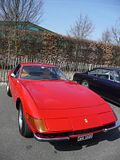
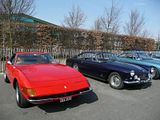
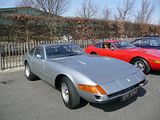
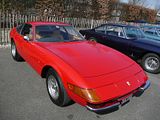
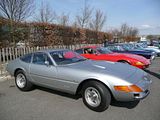

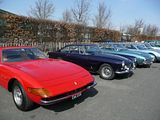 Family Favourites? Well, probably, if you interpret the title to mean cars that everyone the family loved, but never expected to own. Indeed, probably never expected to see in the metal. Ferraris used to be a very rare sighting indeed. How times have changed!
Family Favourites? Well, probably, if you interpret the title to mean cars that everyone the family loved, but never expected to own. Indeed, probably never expected to see in the metal. Ferraris used to be a very rare sighting indeed. How times have changed!2009-11-23 20:14:12





















































































































































